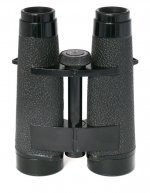Andy,
I'm a Leica fan, but not a collector or expert. I believe the Leica Trinovids began production as the BA model in 1989 or 1990, and somewhere along the line changed to BN (closer focusing), and were made until around 2000 when the Ultravid came out. Prices crept up over this period, but I believe your 8x50 BN would have cost around $1300 new.
Your serial number is very mystifying to me. I currently own a 12x50 BN and a 10x50 Ultravid BR. Both have serial number that are 7 digit numbers. The BN starts with 144, and the later BR starts with 153. So it appears their numbers are consistent, and also consistent with other Leicas I've owned. Your 5 digit number just doesn't fit at all.
I hope member Garymh will pipe in, he is a real expert and can answer all these questions. The main reason I'm even attempting it and creating all this hot air, is to welcome you to the forum! I personally have not seen the exact model you have, but would be pleased if I had one. The reviews that I have seen rated the 8x50 to be optically the best of the BA/BN series.
Trinovids were once top of the heap, and have of course been outdone in some ways by newer models which are made of more lightweight materials, and have more transmissive coatings and often with advanced glass types. But there is still much to be enjoyed about a Trinovid.
The relatively narrow field of the 8x50 is simply a geometrical consequence of its large size and low power. As a result of the narrowness, however, the edge of field will be seen as much more sharply focused than in a binocular with a wider field of view. Another benefit is the long eye relief, which will be an advantage if you need to wear glasses or sunglasses while viewing.
The high weight is the consequence of the degree of ruggedness and precision that Leica achieved without the benefits of magnesium, titanium, polycarbonate, etc.
The light transmission through a BN is around 84%, vs 90-93% for the best modern models. This difference is not large, but is noticeable in direct comparison. It is the only significant optical shortcoming between it and the latest stuff. Taken alone for what it is, however, the BN view is satisfying. There are quite a few fans of these here, but most are birdwatchers who favor the 8x32.
Much has been said here of the advantages of binoculars with large exit pupils, like an 8x50. Most birders don't use them because they are big and heavy for the magnification, but they deliver significant optical advantages in term of the sharpness and quality of the image, ease of use and quickness of view finding, and resistance against scattered light. And of course, they excel for the one thing that makes them so popular with hunters, and that is their performance in near darkness. If you are a newbie, you may take these things for granted for a while, until you try a small high power binocular, and then I think you'll truly appreciate what you've got.
There is also a certain sense of history there. The Leica Trinovid largely first defined what continues today as the modern roof prism binocular, with internal focusing, full waterproofing, adjustable mechanical eyecups, and left/right eye adjustment integral with the focusing mechanism. It was also one of the first with prism phase correction coating, but sadly, Zeiss set that precedent a couple of years previous, you can't win em all I guess! I hope you enjoy yours.
Ron





